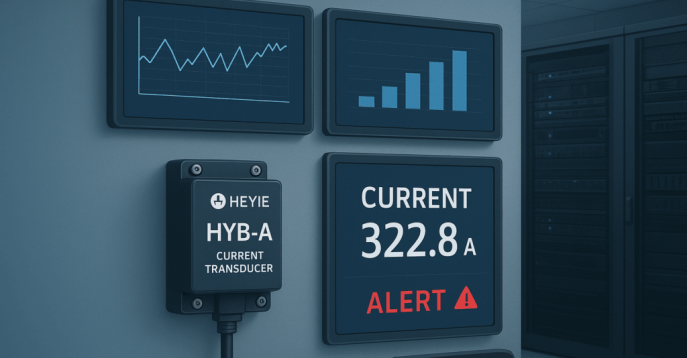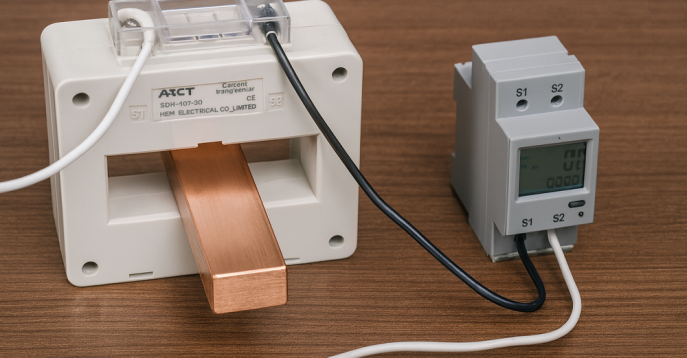News | company news | Dec 20,2024
Low-voltage distribution area data collection solution based on the IOT platform
The construction of smart grids involves the construction of smart distribution substations, a key link of which is the distribution network connecting terminal power users through low-voltage distribution substations. It is urgent to improve the refined and intelligent management level of distribution substations to ensure the power supply quality of the low-voltage power grid and its reliable and safe operation to meet the needs of economic development.
At present, the construction and operation status of distribution substations still have the following problems:
1) The distribution network has many points, long lines and a wide area, and most of them are in a blind adjustment state.
2) At present, the approach of meeting business needs by continuously adding relatively independent small information systems leads to waste of resources and business fragmentation.
3) With the continuous expansion of the scale of the power grid, the gradual improvement of collected information, and the advancement of low-voltage distribution network monitoring, the current centralized processing mode of active-standby services has obvious bottlenecks in terms of massive terminal access, data processing speed, storage capacity, and analysis efficiency, making maintenance and expansion difficult.
The Internet of Things technology can help the power system to perceive and make decisions on massive amounts of information in low-voltage distribution substations through ubiquitous sensing technology, build distribution substations into distribution terminal data interaction centers, and achieve panoramic perception of low-voltage distribution networks through full information collection of various distribution terminals in distribution substations, thereby eliminating blind spots in distribution operation and maintenance and realizing a new management model for distribution substations with full-process control and full professional support; achieving on-site management of users within the jurisdiction of the substation, shortening user failure time, and improving the operation and maintenance level of distribution terminals.
With the development of IoT technology, domestic and foreign manufacturers have launched smart IoT platforms one after another, including China Mobile, Tencent, Alibaba and Huawei, which have successful IoT application cases. Huawei has released a power distribution solution and Hi-Grid kit based on the IoT platform, combining edge computing, IoT (Internet of Things), and cloud management to achieve an integrated solution from the master station, network, and terminal.
The low-voltage distribution station area data collection solution based on the Internet of Things platform can effectively promote the data collection of the low-voltage distribution network.
To meet the opportunities and challenges of the new energy revolution, power companies have transformed into comprehensive energy service companies, seeking to apply the latest Internet concepts and the latest “cloud, big data, Internet of Things, mobility and intelligence” technologies to carry out technical transformation of energy management. Upgrading and transforming the distribution network with relatively weak control capabilities through Internet technology is a starting point for improving the construction, management and operation and maintenance of smart grids.
The distributed-Internet of Things (D-IoT) concept proposed by the industry applies the latest IoT technology to traditional power grids. Through various communication technologies, such as power line communication (PLC), infrared communication, 5G, LoRa, narrow band-Internet of Things (NB-IoT), ZigBee, etc., it accesses massive distribution network terminals and can fully perceive all aspects of power production, transmission, and consumption in real time, thereby improving the interconnection, intercommunication, and interoperability capabilities between devices on the basis of comprehensive perception and data fusion.
The distribution Internet of Things has the characteristics of plug-and-play terminals, extensive interconnection of equipment, comprehensive status perception, cloud computing collaboration, on-demand customization of applications and efficient use of resources. The introduction of distribution Internet of Things technology can improve power supply reliability, reduce operation and maintenance costs, adjust energy structure and enhance user experience, assist power users in saving energy and reducing consumption, and independently manage energy efficiency.
The overall architecture of the power distribution Internet of Things is shown in Figure 1. It is divided into three layers. The upper layer is the cloud, the cloud-based main station; the next layer is the edge, that is, edge computing, which extends cloud computing to the edge; the last layer is the terminal, various types of smart terminals, which realize the perception of the distribution network and build a cloud-edge-terminal power distribution Internet of Things architecture as a whole [9]. The essence of the power distribution Internet of Things is to deeply integrate informatization and industrialization, and further release the productivity of the original distribution network through the power of informatization, achieving a qualitative leap.
Figure 1 Overall architecture of power distribution IoT
At present, the design concept of the power distribution Internet of Things is based on “hardware platformization and software APPization”, using an open hardware platform and operating system to achieve hardware and software decoupling, and using different APP application software to expand terminal functions. As the edge computing gateway of the power distribution Internet of Things, the new intelligent distribution transformer supervisory terminal unit (TTU) is not only for distribution transformers, but also for the entire distribution station area, voltage-side equipment, and overall information and communication management, and integrates edge computing.
Edge computing fully leverages the high versatility of cloud computing in resource integration and the edge side’s ability to quickly and reliably respond to user needs. The advantages of its architecture lie in cloud collaboration and local computing. On the edge side close to end users, flexible and efficient data application software APPs are developed, such as distributed power grid connection, topology identification, load forecasting, line loss analysis, fault diagnosis, risk warning, electric vehicle charging and discharging, and other edge computing applications, reflecting the application value of distribution Internet of Things.
The schematic diagram of the communication topology of the power distribution Internet of Things is shown in Figure 2. The intelligent terminal gateway is also responsible for protocol conversion and access to various distribution-end devices. Currently, there are many manufacturers of equipment in the field of distribution networks. By establishing a protocol library through intelligent distribution terminals, the existing equipment can be used to the maximum extent to achieve the purpose of interconnection and interoperability without large-scale transformation of the original equipment.
Figure 2 Schematic diagram of power distribution IoT communication topology
The message queuing telemetry transport (MQTT) protocol is an instant messaging protocol released by IBM in 1999. It is simpler, lighter, and easier to use. It is suitable for message distribution in restricted environments. It is also a lightweight publish/subscribe message transmission protocol designed for IoT scenarios (low bandwidth, network latency, and unstable communication). It uses TCP/IP connection. Its biggest advantage is that it can provide reliable transmission for remote devices with limited computing power and low bandwidth.
The MQTT protocol completes communication through the client and server, and is divided into three identities: publisher, broker, and subscriber. The message broker is the MQTT server. The publisher and subscriber of the message are both clients, and the publisher can also be a subscriber. The publisher and subscriber do not need to know whether the other party exists, but only need to connect to the Broker through the IP and port. The Broker can filter and distribute messages according to different topics to realize message publishing and subscription.
MQTT provides three quality of service (QoS) levels for information transmission: at most once (QoS0), where messages may be lost; at least once (QoS1), which guarantees that messages arrive, but may be duplicated; and exactly once (QoS2), which guarantees that messages arrive only once.
The end device can communicate with the IoT platform directly via the MQTT protocol, or it can communicate with the IoT platform via the local network through the edge computing smart terminal and then via the MQTT protocol.
The MQTT protocol for power distribution IoT achieves different purposes by defining different topics. A single topic can contain multiple levels, with slash characters separating different levels. For example, the edge computing terminal adds end devices through the topic /v1/devices/{gatewayId}/topo/add.
4.1 Device Plug and Play Process
The registration of the edge computing intelligent terminal is initiated by the main station application, and the device registration on the platform side is completed by calling the device registration interface. The terminal plug-and-play registration communication process is shown in Figure 3.
1) The master application obtains the device file and SN number by scanning the code or other methods.
2) The master station applies the profile information of the smart terminal below to the IoT platform.
3) After the IoT platform returns the deviceId, the master station prompts that the registration is successful and establishes an association between the SN code, deviceId and master station mRid.
4) Import the substation model file on the master station side.
5) After the edge computing intelligent terminal is powered on, it requests to connect to the IoT platform through the MQTT protocol. After the IoT platform matches the registration information, it returns the login pass information to the terminal.
Figure 3 Terminal plug-and-play registration communication process
4.2 Data Subscription Process
The master application can obtain device data once by issuing a command. Generally, the master callback notification address is registered by data subscription. When the device data in the IoT platform changes, the IoT platform will actively notify the master application of the changed data.
1) The main site application calls the subscribe API to subscribe to device data change notifications. When the device data changes, the platform will push it to the application.
2) The edge computing intelligent terminal actively reports data messages to the IoT platform through MQTT PUBLISH messages.
3) After the IoT platform receives the device data change, it calls the notification callback address callbackUrl registered by the master station to notify the master station of the information.
When connecting devices to the IoT platform, you need to write a device Profile file, which is used to describe the device capabilities, services, and how to control the device. Device capabilities include device type, manufacturer, model, protocol type name, and service type provided. Service description can be understood as the functional module of a physical device or the service provided by a virtual device, including commands and attributes.
Figure 4 Data subscription communication process
The Profile file needs to be converted into an XML-based model file for the power system according to IEC61968/IEC61970. The abstract classifications are basic (basic information, including manufacturer, equipment model, etc.), config (parameter configuration, including communication parameters, protection parameters, etc.), topology (topology, including primary topology information of the power grid, etc.), and capability (abstract classification based on equipment capabilities, including analog quantity, discrete state quantity, accumulator accumulation quantity, command command, etc.).
The IoT platform provides a variety of RESTful API interfaces for the master application. Through these interfaces, business scenarios such as device management (including adding, deleting, checking, and modifying devices), data reporting, and command issuance can be realized.
REST (representational state transfer) is a resource-oriented lightweight Web Service architecture whose API has three characteristics: ① Locating and identifying resources through Uniform Resource Identifiers (URIs); ② Operating resources through methods defined in the HTTP protocol (PUT, GET, POST, DELETE); ③ State independence.
For example, the API interface for the master station to register the gateway device:
Calling method: POST
Request interface:
This paper introduces a data collection solution for low-voltage distribution substations. It uses the edge computing intelligent terminal TTU as the gateway, and accesses the smart meters, reactive compensation devices and various sensors in the substation through PLC, short-range wireless communication, infrared communication, radio frequency and other communication methods. Based on the Internet of Things platform, it realizes flexible and real-time access to the data of the terminal equipment in the distribution substation area, interconnection between devices, and provides a data sharing and fusion interface for other application platforms. The application of this solution can solve the problems of many types of equipment on the distribution side, complex communication environment and difficult data collection.
As a new generation of IoT access module for the power distribution and utilization master station system redesigned according to the energy IoT edge computing + cloud computing architecture, the solution is deployed in the provincial bureau and corresponding local dispatching side in conjunction with the construction of the Guangdong Power Grid Smart Grid Demonstration Zone, and accesses some pilot smart substations equipped with smart TTUs, independent enterprise-level IoT devices, and smart distribution room IoT devices.
It can comprehensively monitor the operating status of the substation in real time, conduct real-time big data analysis, obtain the three-phase load imbalance rate, load rate and reliability statistical analysis of the substation, etc., realize high intelligence, high monitoring and control of the low-voltage distribution substation, which can greatly improve management efficiency and enhance the ability to serve power customers.
--- END ---

Oct 21, 2025
An important component of data center power monitoring : HEYI Electric HYB-A1 4-20mA current transmitter Why data centers cannot do without current transmitters In the digital information age , data centers are the core of the Internet . We not only need excellent server performance, low network latency , and huge storage capacity, but we… Continue reading Why is 4-20mA current transmitter suitable for data centers

Oct 18, 2025
Battery current sensor from HEYI Electric – Providing Safer Protection for Clean Energy Why clean energy systems cannot do without leakage detection Carbon neutrality is the common goal of the earth. In an era when clean energy is becoming increasingly popular – from electric vehicle charging stations to photovoltaic power generation systems and energy storage… Continue reading How battery current sensor serve clean energy

Oct 09, 2025
HEYI Electric’s SDH Window-type CT : a universal player for European and American projects Two frequency options : 50Hz /60Hz for Europe and 60Hz for North America. One set of assembly design is universally applicable worldwide , so there is no need to distinguish two sets of product numbers for cross-border and cross- regional projects… Continue reading Window-type CT suitable for EURO and US projects